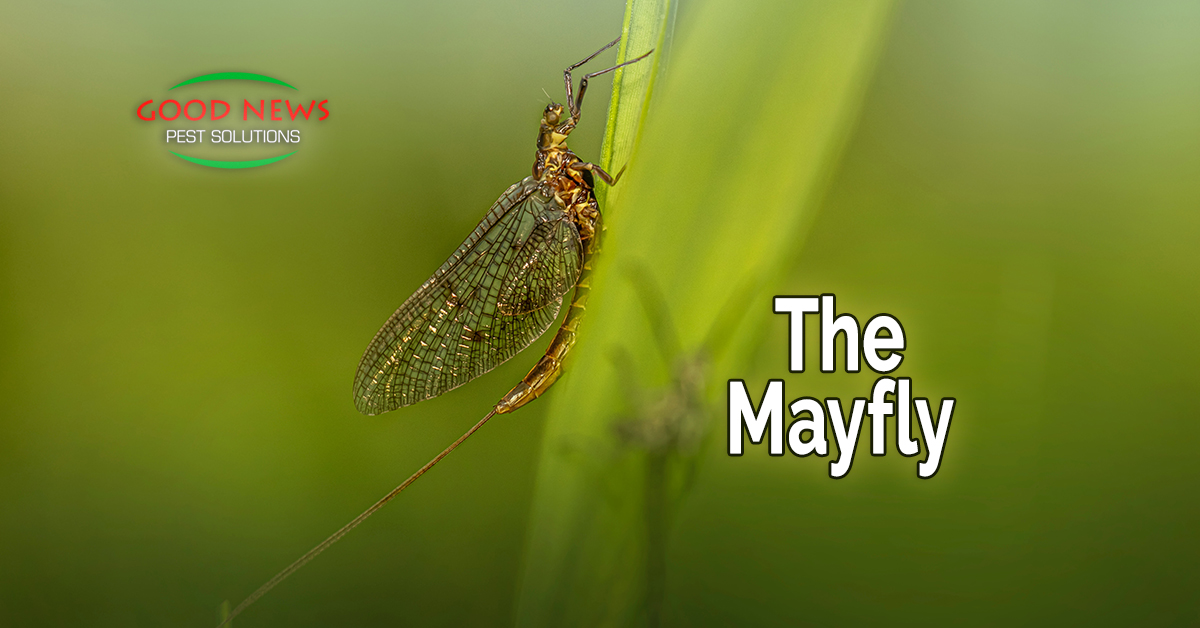
The Mayfly
As we approach the end of April, this seems like the perfect time to talk about the Mayfly. But not for the reasons that could appear too obvious.
For starters, although it appears in most parts of the world around this time, the insect in question is not named for the month of May. There are several related, but slightly different insects that make up the order Ephemeroptera. At one time, they were referred to as dayflies, because of their very short adult life spans.
The name “Mayfly” emerged around 1883, not pointing to the month of every year, but from the habit of Ephemera danica to emerge as adults when the Mayflower is in bloom. The pink and white buds of the official state flower of Massachusetts were unknown to European travelers, but they took samples back to their homeland.
What could be even crazier though, is that the first mention of mayflies is in the 4000 year old Epic of Gilgamesh. The ancient poet uses them to symbolize how fleeting life is as the mythical warrior goes about after the Biblical flood, seeking a way to have eternal life.
Epic poetry aside, the ever so short life of the adult mayfly has been used symbolically for centuries – from Aristotle and Pliny the Elder to German painter, printer and Martin Luther supporter Albrecht Dürer, who believed Mayflies represented a sacred connection here on earth to Heaven.
Metaphorical to Meta-fish-icle
Distantly related to dragonflies, mayflies spend most of their existence in the nymph stage, in lakes, rivers and ponds. In fact, they’re so prevalent, anglers long ago started making artificial fishing flies that strongly resembled the mayflies, hoping to ‘fly’ under the radar of their presumed catch.
The nymph or niad forms of Ephemeroptera have elongated, somewhat flattened, or sometimes cylindrical, bodies. They go through a series of stages over the years they stay in the water, getting larger with every molt. The final waterborne stage is called subimago – it has wings, but not fully developed sexual organs. In fact, it’s the only insect that develops wings prior to adulthood.
Within a day or two, sometimes as brief as a few minutes, the subimago goes through one final metamorphosis to adulthood, springing forth from the water to take flight. Imagos or adult mayflies, have large compound eyes, short, flexible antennae, and non-functioning mouths (Adult mayflies don’t eat).
The males tend to have unusually long front legs for grabbing females and holding on to them during the midair mating. And for that mating, both males and females have paired genitalia – meaning they simultaneously breed twice in every short mating session. Afterwards, females drop back into the water where they lay their eggs and die.
Mayflies are in no way harmful to humans – except in a few rare cases where people are allergic to their shed skins. They also can pile up during the busiest times of their brief lives, attracted to the light with their dying breaths. They are a sign of healthy waterways, and helpful for fishermen, as noted.
For all the other insects out there, why not sign up for our Go Green Perimeter Plus solution? It handles all the typical bugs we encounter every day on the Gulf Coast of Florida. Its affordable, safe for the whole family and we use the most effective green pest control treatments you can find. For complete details, please give us a call!
Proudly Serving
Sun City Center, Ruskin, Palmetto, Parrish, Ellenton, Bradenton, Anna Maria, Holmes Beach, Bradenton Beach, Longboat Key, Lakewood Ranch, University Park, Myakka City, Sarasota, Siesta Key, Osprey, Nokomis, Casey Key, Venice, Englewood, North Port, Port Charlotte, Punta Gorda, Arcadia
Things You Can Do
Pay Your Bill Online
Leave Us a Review
Request a Free* Termite Inspection
Stop Mosquito Bites
Get Rid of Rodents
Get a Termite Damage Warranty
Get Pest Control for Your Attic
Get Pest Control for Your Business Request Prayer
Corporate Address
1080 Enterprise Court, Ste A
North Venice, FL 34275
Call Now: (941) 412-9610
Text: (941) 412-9610
Fax: (941) 412-0080
